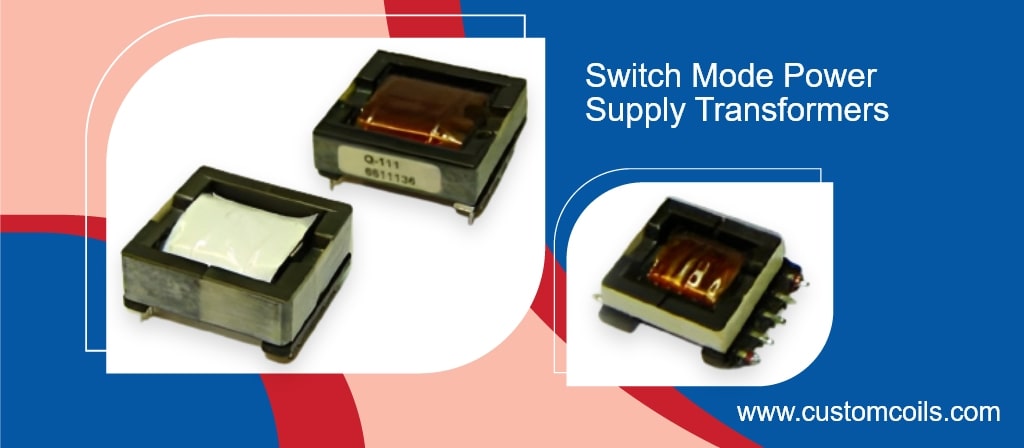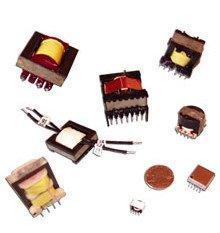A switch mode power transformer (SMPS) uses electronic switches to convert AC input voltage into DC output voltage. These transformers are used in applications where high efficiency and small size are desired, such as in laptops and cell phones. SMPS transformers are designed to be small and lightweight, and they can also be used in higher frequency AC-DC power supplies.
Would you like to know more about switch mode transformers? This post will answer some of the most frequently asked questions about SMPS transformers, including benefits, topologies, applications, and design considerations. If you have any questions about SMPS transformers, keep reading!
How Does a Switch Mode Power Transformer Work?
Switch mode power transformers offer efficient conversion of AC main power to DC output voltage. When switched on, the AC main power is filtered through a capacitor, then converted from AC voltage to unregulated DC voltage. In many applications a regulator is also used, this changes the unregulated DC voltage into a regulated DC output at a specified level.
How is Switch Mode Power Transformer Different from Other Transformers?
Switch mode power transformers offer several distinct advantages when compared to traditional transformers. Their compact size and light weight make them ideal for use in applications where space is limited. They also provide higher efficiency, allowing more power to be delivered from a smaller transformer. Furthermore, SMPS usually feature a wider range of operating frequencies, enabling them to accurately handle more dynamic loads. These transformers are used in high-efficiency power supplies due to their ability to reduce energy dissipation. By internally switching between an on and off state, these transformers can minimize heat production for greater efficiency when compared with linear power supplies. These features combine to make switch mode power transformers an attractive option for many commercial and industrial purposes.
What Are the Different Topologies for Switch Mode Power Transformers?
There are a few different ways to configure SMPS. The most common topologies are flyback, push-pull, and half-bridge. Your choice of topology will be determined by several factors, including the type of load, the required output power, and the size of the transformer.
- Flyback Topology: This topology is used for low component count applications. In this configuration, the transformer is used to store energy in a magnetic field, which is then released to the secondary winding when the primary current is interrupted.
- Forward Converter: Forward converters are the preferred solution for lower power applications, because they transfer energy directly from the primary to secondary side without storing it in the core.
- Push-pull: The push-pull topology is a forward converter design with dual-drive winding, resulting in greater transformer core utilization than flybacks or simple forward converters. This yields additional efficiency advantages.
- Half-bridge: The half-bridge is an efficient topology for energy transfer due to its ability to disperse load current in either direction. This system is superior in terms of power conversion compared to other standard bridge mechanisms.
- Full-bridge: The full-bridge topology is designed to provide twice the output power of a single half-bridge. It comprises two half-bridges and has similar switch ratings compared to the previously mentioned configuration.
What Are the Design Considerations for an SMPS Transformer?
There are many factors to consider in order to produce an efficient design. The main design considerations for an SMPS transformer are the following:
- Core material
- Core geometry
- Wire type
- Inductance
- Leakage inductance
- Input and output voltage
- Output power or current
- Switching frequency
- Operating mode
- Maximum duty cycle of the IC
- Temperature requirements
- Size requirements
- Voltage rating
- Temperature rating
Each of these design considerations must be considered to produce an SMPS transformer that meets the application’s specific needs.
What are the Applications of Switch Mode Power Transformers?
Switch mode power supply transformers are used in various electronic devices, such as computers, servers, and cell phone chargers, audio power amplifiers, and RF power amplifiers. They are also used in industrial power supplies and medical power supplies. The other applications areas of switch mode transformer unit include:
- Medical devices
- Communication devices
- Commercial power supplies
- Security systems
- Support supplies for PLCs
- Audiovisual products

As a established buyer, you want to make an informed purchasing decision after gaining as much information about the product as possible. Needless to say, when it comes to switch mode transformers, acquiring relevant information is essential for making an informed purchasing decision. If you want to learn more about these types of power transformers, you can also talk to leading transformer manufacturers like Custom Coils, which is a leading manufacturer of custom magnetic products, including switch mode transformers. They have a team of experts who can help you learn more about this type of transformer and how it can be used in your application.


